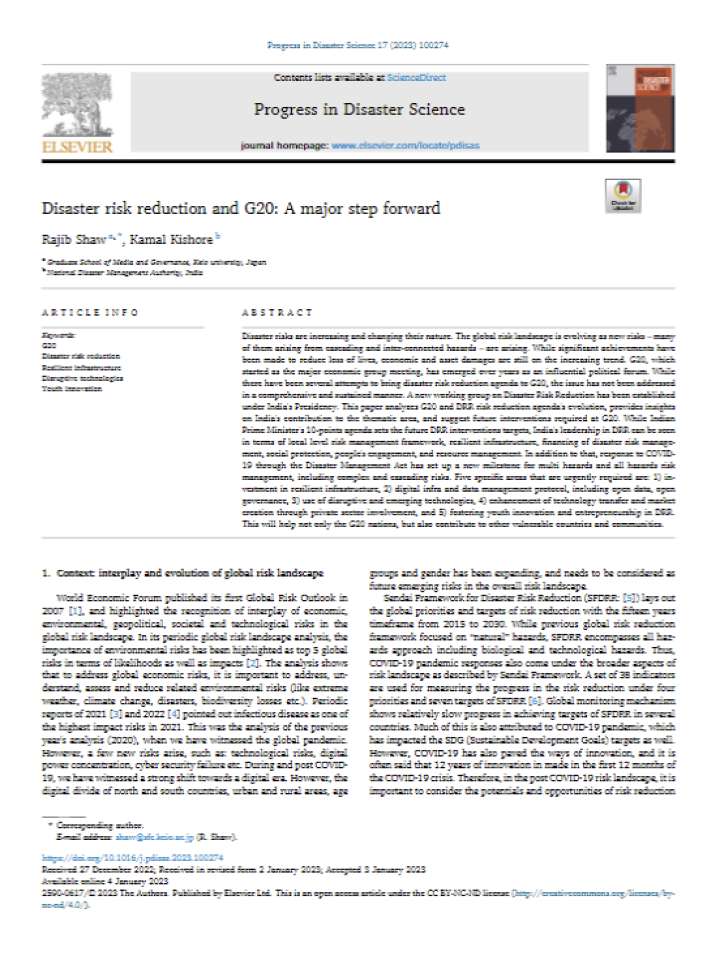Disaster risk reduction and G20: A major step forward
This paper analyzes G20 and DRR risk reduction agenda's evolution, provides insights on India's contribution to the thematic area, and suggest future interventions required at G20. Disaster risks are increasing and changing their nature. The global risk landscape is evolving as new risks – many of them arising from cascading and inter-connected hazards – are arising. While significant achievements have been made to reduce loss of lives, economic and asset damages are still on the increasing trend. G20, which started as the major economic group meeting, has emerged over years as an influential political forum. While there have been several attempts to bring disaster risk reduction agenda to G20, the issue has not been addressed in a comprehensive and sustained manner. A new working group on Disaster Risk Reduction has been established under India's Presidency.
While Indian Prime Minister's 10-points agenda sets the future DRR interventions targets, India's leadership in DRR can be seen in terms of local level risk management framework, resilient infrastructure, financing of disaster risk management, social protection, people's engagement, and resource management. In addition to that, response to COVID-19 through the Disaster Management Act has set up a new milestone for multi hazards and all hazards risk management, including complex and cascading risks. Five specific areas that are urgently required are:
- investment in resilient infrastructure,
- digital infra and data management protocol, including open data, open governance,
- use of disruptive and emerging technologies,
- of technology transfer and market creation through private sector involvement, and
- fostering youth innovation and entrepreneurship in DRR. This will help not only the G20 nations, but also contribute to other vulnerable countries and communities.
Explore further
